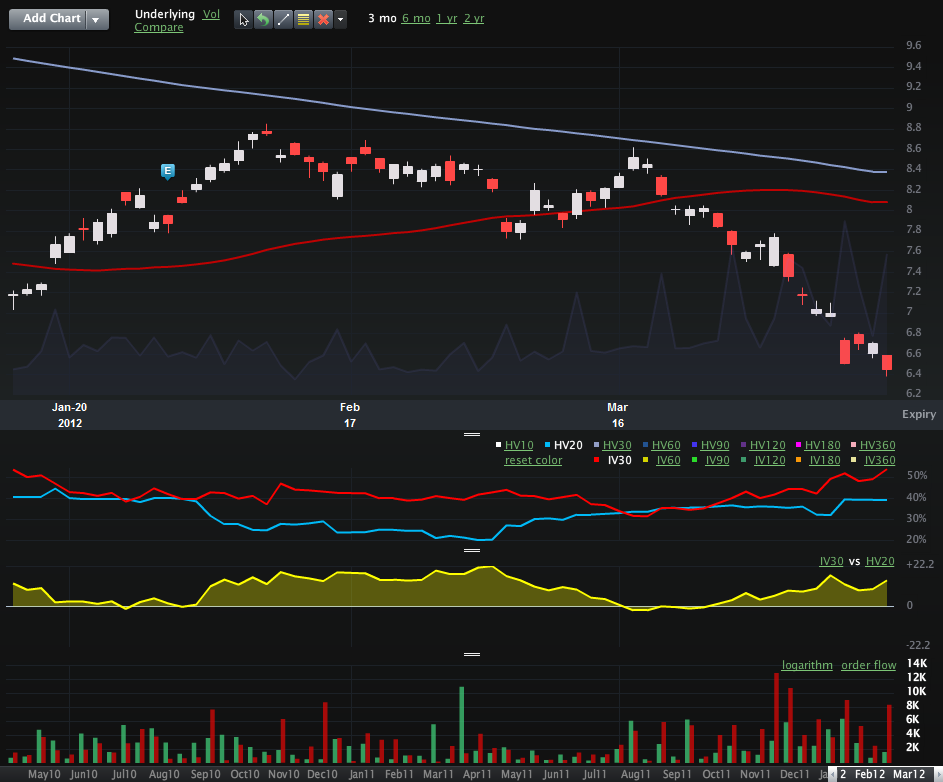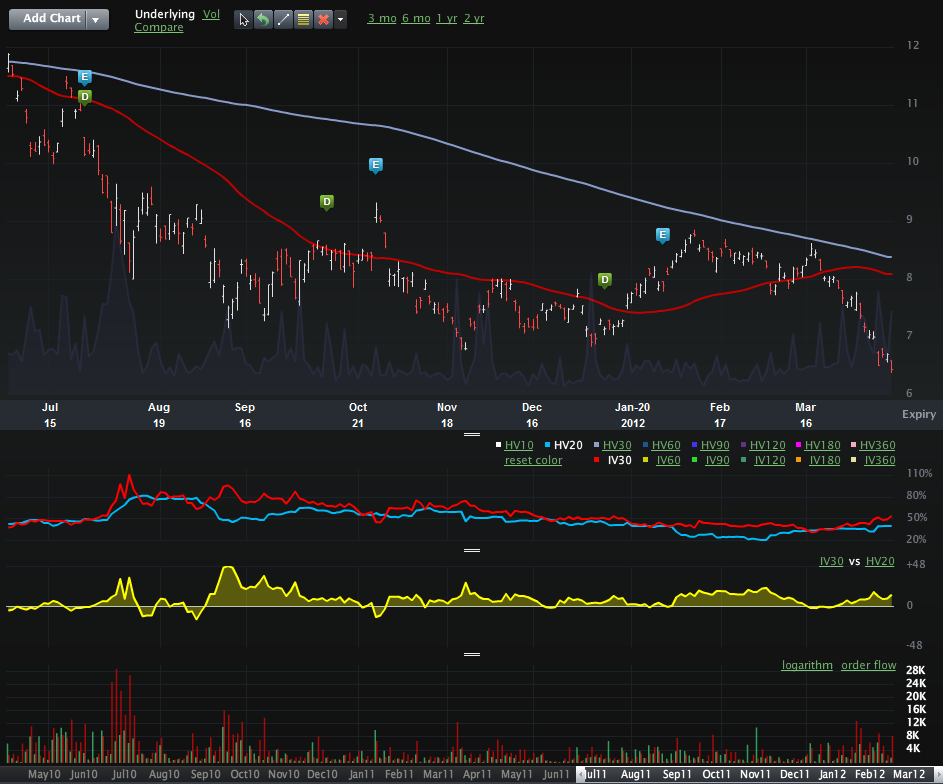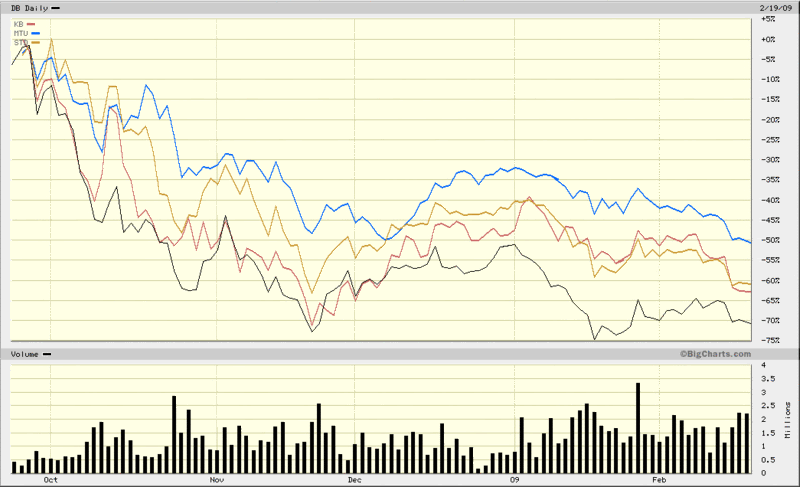Rally Leaves Spanish Banks Behind
Stocks are firing on all cylinders today, with the S&P 500 index up more than 1.4% as I type this and most heat maps showing nothing but various shades of green. Even European stocks are strong today. With Europe’s exchanges closed for the weekend, the European country ETFs have followed the U.S. markets higher, though Spain’ ETF (EWP) has been a laggard.
Look at the ADRs for Spain’s banks, however, and it appears that the banks are not participating in today’s rally. Spain’s largest bank, Banco Santander (ticker SAN, previously STD until one month ago today) had managed a gain of just 0.03 today, while the country’s #2 bank, Banco Bilbao Vizcaya Argentaria (BBVA), is off 0.04.
In short, it appears that no matter what the U.S. markets do or the euro zone leaders say or do, stocks for these Spanish banks continue to act as if they are swimming in concrete shoes.
The chart below shows the price action in BBVA since the beginning of 2011, as well as a study on top of the main chart that tracks the performance of BBVA relative to SPY for the same period. In the ratio chart study, I have thrown a 200-day moving average of BBVA:SPY (solid blue line) to underscore that not only has the trend been consistently down, but the ratio has not even come close to trading over its 200-day moving average at any point in the past 1 ½ years.
For the record, the chart for SAN and the SAN:SPY ratio is equally ugly and a similar chart of EWP:SPY is no better than a chart of the Spanish banks.
It remains to be see how the situation with Spain and its banks will be resolved, but until there is some sort of resolution on the horizon, I would to continue to expect to see considerable activity in the puts of SAN and BBVA.
Related posts:
- Chart of the Week: As Goes Spain…
- Why Not Point Hedges?
- Banco Santander Finally Tackles One Huge Problem: Its Ticker
- Euro Volatility and Risk
- Chart of the Week: VSTOXX, VIX and the Risk of Global Contagion
- The Hollande Discount
- Chart of the Week: European Stocks Holding Up Well
- Recent Performance Divergence in European ETFs
- Where and When Will the Euro Bottom?
- Greece, Spain and the Pulse of European Anxiety
- Spain Rallies

[source(s): StockCharts.com]
Disclosure(s): short SAN and BBVA at time of writing





